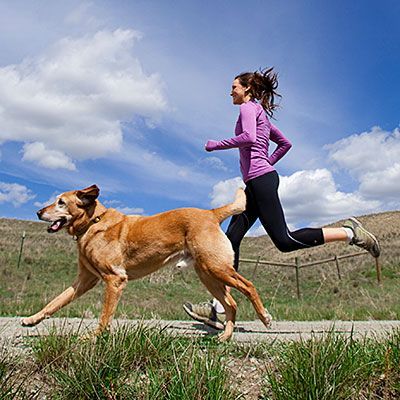
As pet owners, we all want what’s best for our furry friends. We make sure they have the best food, toys, and medical care. However, one aspect of their care that is often overlooked is the importance of regular exercise. Just like humans, dogs need to stay active to maintain their physical and mental health.
The Physical Benefits of Exercise for Dogs
Regular exercise is essential for your dog’s physical health. Just like humans, dogs need to maintain a healthy weight to prevent obesity and related health issues. Obesity in dogs can lead to a variety of health problems, including diabetes, joint pain, and heart disease. Exercise helps to burn calories, build muscle, and keep your dog at a healthy weight.
Exercise also helps to improve your dog’s cardiovascular health. Regular physical activity strengthens your dog’s heart and lungs, improving their overall fitness level. A strong cardiovascular system can help your dog live a longer and healthier life.
The Mental Benefits of Exercise for Dogs
In addition to the physical benefits, regular exercise also provides important mental stimulation for your dog. Dogs are intelligent animals that need mental challenges to stay happy and healthy. Regular exercise helps to reduce boredom and prevent destructive behaviors, such as chewing or excessive barking.
Exercise also helps to reduce stress and anxiety in dogs. Just like humans, dogs can experience stress and anxiety from various sources, such as changes in routine or loud noises. Regular exercise helps to release endorphins, the “feel-good” hormones, which can help your dog relax and feel happier.
How Much Exercise Does Your Dog Need?
The amount of exercise your dog needs depends on their breed, age, size, and overall health. Generally, most dogs benefit from at least 30 minutes to 1 hour of exercise each day. This can include activities such as walking, running, playing fetch, or agility training.
If you have a high-energy breed, such as a Border Collie or Labrador Retriever, they may require even more exercise to keep them happy and healthy. On the other hand, senior dogs or breeds with health issues may need less intense exercise, such as gentle walks or swimming.
Tips for Exercising Your Dog
Here are some tips to help you incorporate regular exercise into your dog’s routine:
Take your dog for daily walks around the neighborhood or to a nearby park.
Play games like fetch or tug-of-war to keep your dog active and engaged.
Consider enrolling your dog in agility or obedience training classes to provide mental and physical stimulation.
Invest in interactive toys or puzzles that challenge your dog’s problem-solving skills.
Choose activities that match your dog’s energy level and interests to keep them motivated.
Conclusion
In conclusion, regular exercise is essential for keeping your dog healthy and happy. By providing your dog with physical and mental stimulation, you can help prevent obesity, improve cardiovascular health, reduce stress and anxiety, and prevent behavior problems. Make sure to consult with your veterinarian to determine the best exercise routine for your dog’s individual needs. Remember, a tired dog is a happy dog!
So, lace up your shoes, grab your dog’s leash, and hit the pavement for a fun and healthy workout together!





